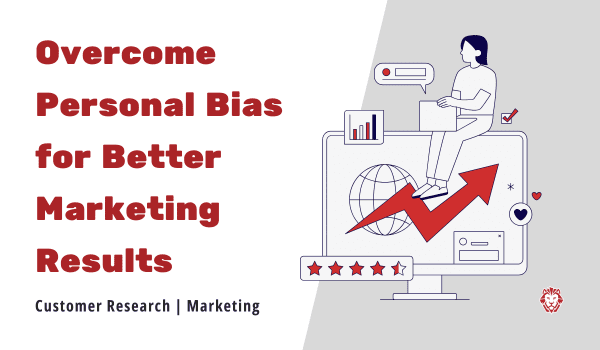
3 Questions to Unlock Your Core Brand
Thanks to the Internet, small businesses now have the ability to build a giant voice.
But, to do so, you can’t just be good at getting found, you also need to be different.
—
Let’s face it – running a business is tough work.
Leadership, sales, training, and finance are just some of the many hats a business leader must wear.
But, to make a business that is – as Jim Collins calls it – built to last, you’ll also need to craft a vision, set your core values, and create an identity.
In other words, you’ll need a brand.
As a Creative Director, I’ve worked with many businesses spanning a wide sea of industries. And, let me fill you in on a little secret: no one has the magic formula.
No business has the secret recipe to be faster, stronger, or better than you. Yet, what separates great businesses from the pack is their willingness to take the time to dialogue, ask the right questions, and craft a unique narrative.
And, today, that is what I ask of you.
Allow me to help you discover your essential brand using these three crucial questions:
Question #1: Have I done my research?
The core to developing a great brand is not only knowing your business but also knowing your audience and the emotions you’re trying evoke from within them.
If you know you provide a great product or service, don’t stop at assessing it from within its own category. Examine your product from all angles and allow time to distance yourself so you may assess it both critically and objectively.
Learn your customer’s lifestyle, philosophy, values, and interests. Deeply understanding your customer’s psycho-graphics will help you correctly position your product or service according to the way your customer sees it.
And, most importantly, don’t forget to take a hard look at your competitors.
I’m sure you may have researched your direct competitors, but have you considered your indirect competitors as well?
For example, let’s say you own an event venue and, as a business, sell concert tickets to raving fans. Obviously, your immediate competitors are other event venues that sell concert tickets as well.
But, if you take the time to examine what an event venue truly provides, you’ll understand that what your business essentially offers is a 2-hour experience at the price point of $80.
From there, you can brainstorm the myriad of products that also provide a 2-hour experience and adjust your brand strategy accordingly.
Doing extensive research on your audience and competitors will lead you to mastering a deep-seated empathy and understanding of your customer.
Only from this vantage point can you align your product or service to fit the emotional needs your audience and create a brand that sticks.
Question #2 – What is my verbal and visual language?
When most people think of the word “brand,” they think of a series of parts: logo, colors, tagline, etc. In other words, to your audience, your brand is a conglomerate of both verbal and visual communication.
The verbal language of your brand includes the content on your homepage, the tagline of your business card, and even the words spoken by the CEO at a press event.
All of these verbal representations communicate the core of brand, which cannot stand on its own. These words also must be paired with visual artistry in order for the information to be palatable to your audience.
Visual language provides your target audience a taste of how your organization operates and a sense of who you are as a team. The purpose of marketing is to communicate to a specific segment of people that your business can satisfy their emotional needs.
Each visual representation must mindfully communicate these emotional needs to your audience, whether they be of success, love, credibility, strength, or just plain competency.
This means your brand should visually communicate the same message and include the same elements across all channels, including your logo, fonts, colors, etc.
But, more important than just mere design consistency, your customers need to also feel a unique experience with your brand, which each visual channel must evoke with instant recognition.
This is where the truth of your brand becomes the impetus to your brand’s success.
In a world of immense information and numerous communication channels, your audience is constantly making quick judgments about your brand through clean, clear-cut stories.
These stories must captivate your audience through a sense of familiarity and liking. Effective design coupled with simple, articulate verbiage will always deliver your brand’s story with style.
Question #3 – How do I keep my brand consistent?
The truth alone will not set you free.
For a brand to thrive, its truth needs to be solidified from within and accurately represented across all channels. Remember: a medium is not the foundation of your brand; instead, it is your message.
The difference between the two?
You own the message outright. The medium, on the other hand, is just a vehicle, and usually a rental at that. When it comes to media, don’t play favorites.
Traditional, digital, or social, go with what’s right for you, and, most importantly, right for your customer.
Branding in the age of inbound marketing is inherently branding in the age of the Internet. And, boy does the Internet move fast. Online, a brand may take years to be built, and one instant to be destroyed.
Thanks to the Internet, small businesses now have the ability to build a giant voice. But, to do so, you can’t just be good at getting found, you also need to be different.
Your brand’s online look and feel must be consistent. No matter which channel your customers and prospects choose to interact with your brand – website, blog, Facebook, Twitter, Youtube, Instagram or whatever tomorrow’s technology may bring – it must communicate the unique experience your brand represents.
If there’s only one thing I can communicate to you on the subject of branding, I hope it is this:
A brand is a beautiful thing.
Enormously powerful. Enormously fragile.
Building a brand takes vision. It takes passion, dedication, and sweat.
And perhaps most importantly, it takes discipline. The discipline to never waiver from your brand’s DNA and what your message to the world will be.
It is impossible to overemphasize the importance of brand consistency. Endless studies prove consistency increases awareness and helps cement an emotional connection to the brand.
The more single-minded you are, the more powerful the brand will be.
It’s that simple.



